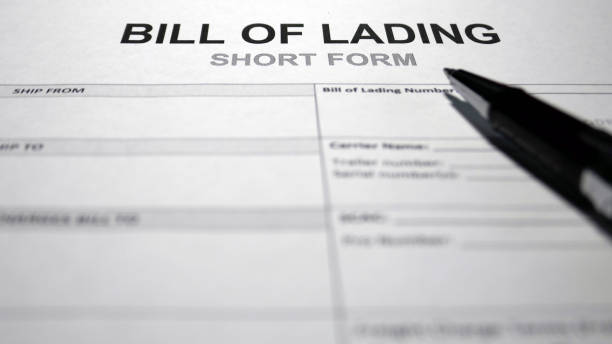If you are getting ready to sign on a Bill of Lading (B/L) or are one of the signatories in your company that is authorized to sign for a Bill of Lading transaction, there are few things to keep in mind or consider before you go ahead with your containerized commercial cargo. The following include the purpose of a bill of lading.
Contract of Carriage Evidence
You need to remember that a Bill of Lading is an official document concerning a trade. However, it is in no way a contract between the two parties (buyer and seller) nor is considered a contract of carriage between the two main parties as well. The contract is usually established when the buyer places the order and terms (how & how much, when, where, and what) concerning the transaction are agreed in detail. The contract between the shipper and carrier would have been established when the shipper or freight forwarding agent booked the carrier or shipping line for carrying the cargo from Point A to Point B. The B/L or Bill of Lading in this scenario is the Evidence pertaining to the Contract of Carriage that has been entered between the two parties, the Carrier and the Shipper.
Receipt of Goods
A B/L is issued as a proof of goods received by the carrier from the likes of a shipper or agent (confirming that goods are in order and conditioned as per what was given by the shipper. This document is received in exchange of the receipt of the cargo.
Document of Title to the Goods
The holder of B/L will be able to claim the goods (and thus transferred into their care), whereby the holder of the B/L will hold the claim for the goods or later transfer it to someone else.
Based on the above, you know what the purpose(s) of Bill of Lading will be. Now, there are a few points to consider before you sign a bill of lading.
- Make sure that the bill of lading is on the correct stationery. It should include the logo of the carrier and the terms and conditions (which are approved by the carrier, as well as regulatory bodies and authorities).
- Verify the address information. It is important that the signatory checks as it is not the shipper’s responsibility to avoid unnecessary delays during berthing and ship operations.
- Verifying particulars of cargo. Before the bill of lading is signed, It is important to verify the details given during the booking to ensure what is allowed for carriage and declared for carriage is in line.
- Verifying the correct vessels information. Ensure cargo is received for shipment or shipped on board and clause is included before singing the bill of lading. In terms of Received for shipment, the carrier should have received the cargo or containers (on port sacks allocate or the shipping vessels) before the bill of lading is issued, when the shipper requesting it claused with Shipped on Board, the cargo should have been loaded onto the vessels.
- Verifying or checking protective clauses. Terms such as shipper’s load, stow and count, said to contain, are usually printed within the bill of lading, and its good business practice to check in order to safeguard the carrier’s interest.
- Non-inclusion of commercial terms. Often terms included in the sales contract are not included in a standard bill of lading.
- Bill of lading originals must be issued in the right numbers, and marked accordingly. Bill of lading copies and the original must be marked and issued with care. Usually there will be originals and 6 copies,
- Ensure that payments have been handled prior to singing a bill of lading.

